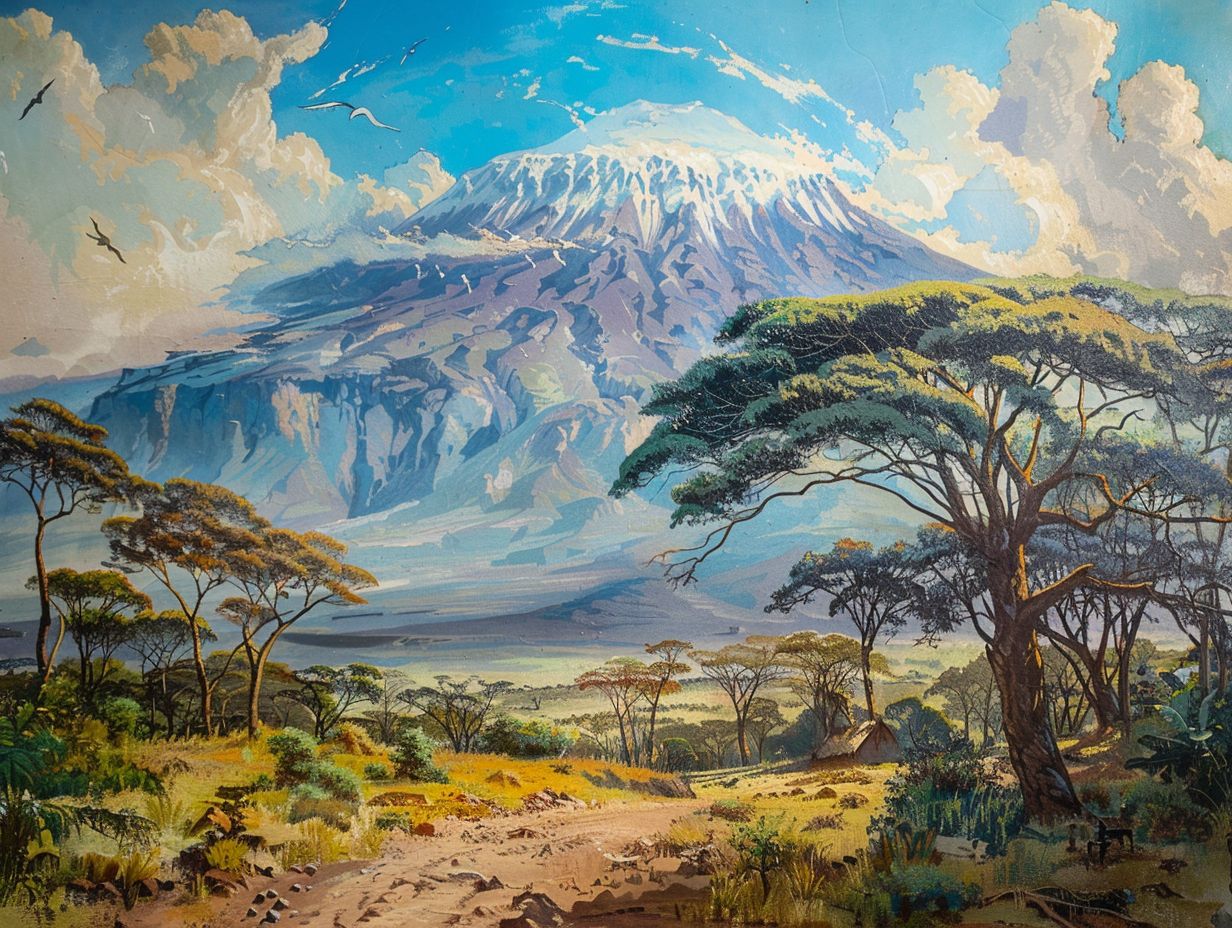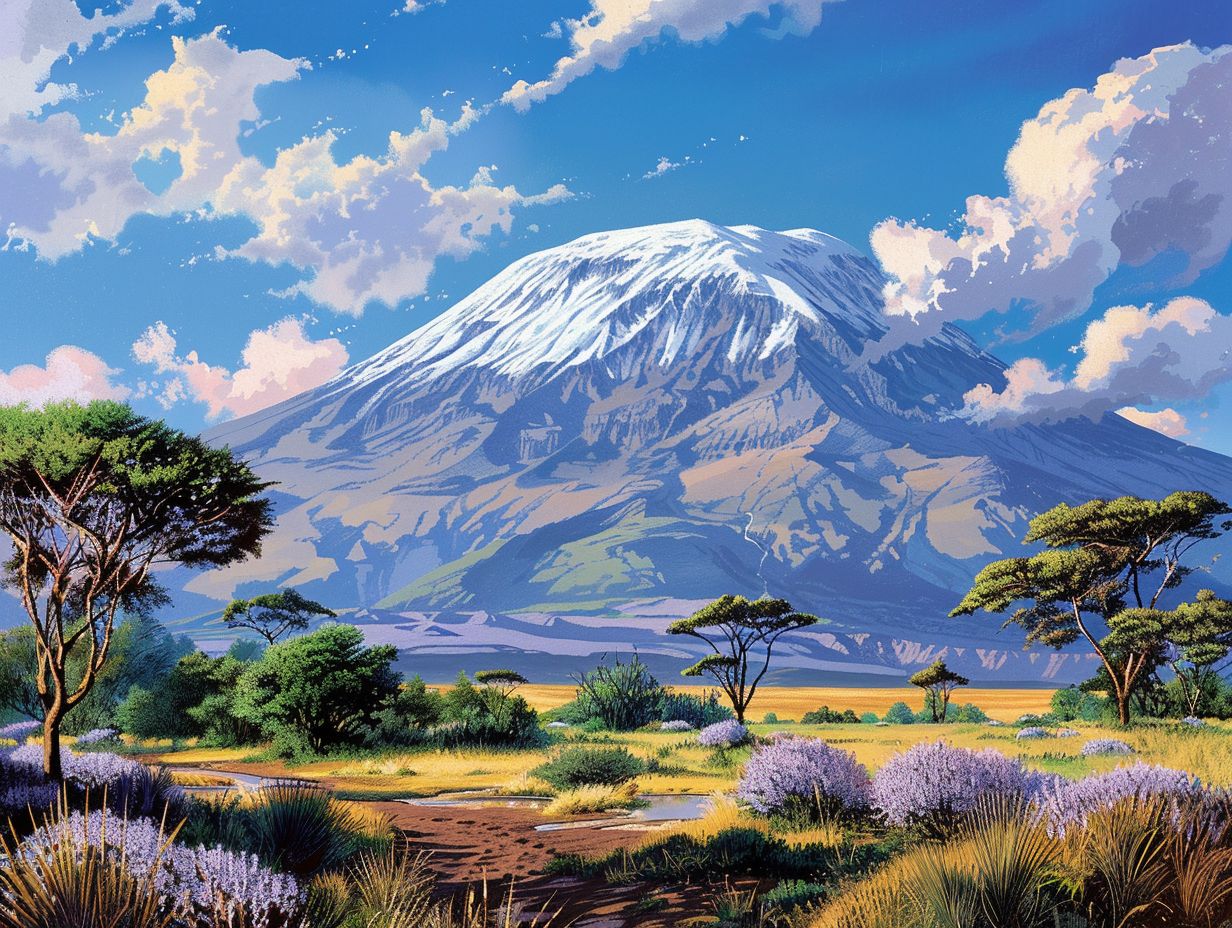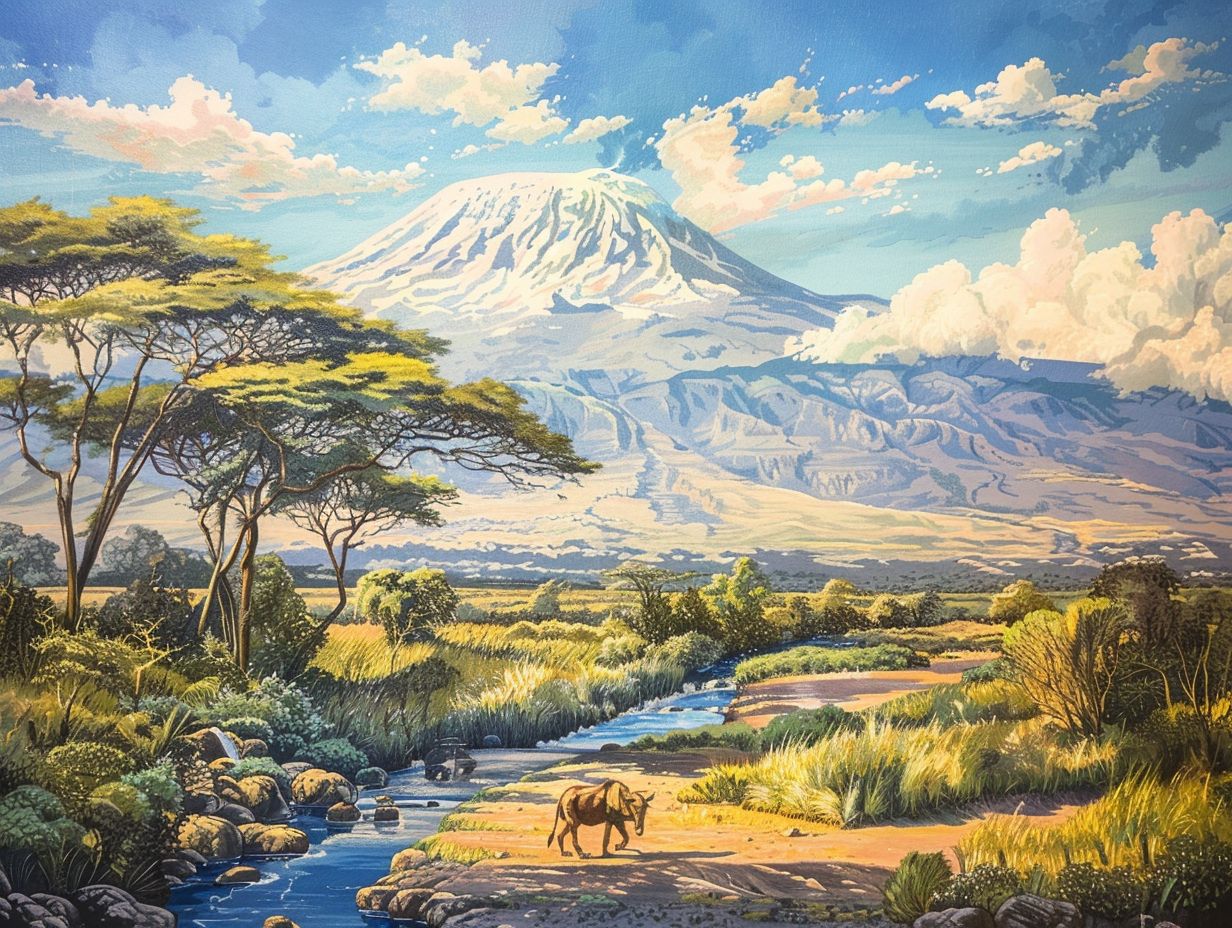
Does Kilimanjaro Have Wifi?
Planning a trek up Mount Kilimanjaro and wondering about the internet connection?
We explore the availability of wifi on Kilimanjaro, how to access it, the costs involved, and why it may not be readily available.
We discuss alternative communication options like satellite phones and local SIM cards and provide tips on preparing for limited internet access.
If you’re curious about staying connected while conquering this majestic peak, read on!
Key Takeaways:

- Kilimanjaro does not have wifi due to environmental impact, infrastructure limitations, and its remote location.
- Alternatives to wifi on Kilimanjaro include satellite phones, local SIM cards, and mobile hotspots.
- To prepare for limited internet access, download necessary apps and information, communicate with loved ones beforehand, and embrace the digital detox experience.
What is the Internet Connection Like on Kilimanjaro?
Internet connectivity on Mount Kilimanjaro varies depending on the location and altitude. While some areas provide high-speed Wi-Fi access, other remote parts may have limited or no internet connection, especially at higher altitudes where the focus is on safety and climbing experience.
Climbers, tourists, and guides often rely on internet access to stay connected with the outside world, share their experiences, and access important information during their journey.
The impact of altitude and harsh environmental conditions on network access cannot be underestimated. At higher elevations, technology struggles due to thinner air, extreme temperatures, and rugged terrain. In such cases, climbers and expedition teams often resort to alternative communication methods such as satellite phones for emergency situations or vital updates.
-
How to Get Internet Access on Kilimanjaro?
To access the internet on Mount Kilimanjaro, climbers can utilize available Wi-Fi hotspots at base camps or use mobile data services provided by local telecommunication companies offering LTE or broadband connections. Some tour operators may offer satellite network services for communication during the climb.
Wi-Fi hotspots in the base camps provide climbers with a convenient way to stay connected with the outside world, although the reliability and speed can vary depending on the location and time. For a more consistent connection throughout the journey, climbers can opt for mobile data services, which are supported by the local telecommunication infrastructure.
Local companies have expanded their network coverage in the region, ensuring that climbers have access to essential communication tools. This connectivity is crucial not only for checking weather updates and staying in touch with loved ones but also for emergency situations where immediate help might be required.
While satellite networks are more costly, they offer a reliable communication backup in remote areas where traditional networks may not reach. This redundancy can be a lifeline in case of emergencies or when other means of communication fail, providing climbers with an added layer of safety and security during their ascent.
-
What is the Cost of Wifi on Kilimanjaro?
The cost of Wi-Fi on Kilimanjaro can vary depending on the service provider, location, and the package chosen by climbers or tourists. Some operators offer rental options for devices with airtime or service plans specifically designed for connectivity on the mountain.
Factors such as the altitude, rugged terrain, and infrastructure on Kilimanjaro impact the pricing structures set by Wi-Fi service providers. Providers need to consider the installation costs, maintenance expenses, and equipment needed to ensure reliable connectivity amidst challenging conditions.
Revenue generation through internet services for operators is a key motivator to expand connectivity options on the mountain. Offering Wi-Fi not only enhances the overall experience for climbers but also opens up additional streams of income for tour operators and local businesses.
The convenience of different connectivity packages available enables climbers to stay connected with loved ones, access weather updates, and share their journey in real-time. Whether it’s hourly rates, daily plans, or expedition-length packages, there’s a variety to suit the diverse needs of adventurers tackling Kilimanjaro.
Why is Wifi Not Available on Kilimanjaro?
The absence of Wi-Fi on Kilimanjaro can be attributed to several factors, including environmental impact concerns related to preserving the mountain’s ecosystem, limitations in infrastructure development due to the remote location and terrain challenges, and the difficulty of achieving satellite coverage across all areas of the mountain.
Preserving the delicate balance of Kilimanjaro’s ecosystem is of paramount importance to environmentalists and local authorities. Introducing Wi-Fi could potentially disrupt the natural habitat and wildlife that call this majestic mountain home. The unique flora and fauna that thrive in this high-altitude environment are sensitive to disruptions, necessitating a cautious approach towards any technological advancements.
The remote location and rugged terrain of Kilimanjaro pose significant challenges for setting up the necessary infrastructure to support Wi-Fi networks. The mountain’s steep slopes, varying weather conditions, and limited accessibility make it logistically demanding to install and maintain internet connectivity.
Ensuring seamless coverage through satellite technology presents its own set of complexities. The mountain’s elevation and constantly changing weather patterns can interfere with signal transmission, making it challenging to provide uninterrupted connectivity to climbers and visitors.
The impacts of climate change have also heightened the urgency to address connectivity options on Kilimanjaro. The retreating glaciers due to global warming not only affect the mountain’s environmental dynamics but also raise concerns about access to reliable communication services for safety and emergency situations.
-
Environmental Impact:

The environmental impact of introducing Wi-Fi on Kilimanjaro raises concerns about the conservation of the UNESCO World Heritage site, potential disturbance to wildlife and habitats, and the balance between modern amenities and preserving the mountain’s natural beauty.
Bringing Wi-Fi to Kilimanjaro, while seemingly offering connectivity and convenience for visitors, must be approached with caution to avoid irreversible harm to this fragile ecosystem. The installation of Wi-Fi infrastructure could disrupt the natural habitats of endemic species and interfere with migratory patterns.
Preserving the mountain’s ecological balance is crucial to safeguard the unique flora and fauna that call Kilimanjaro home. The cultural significance of the mountain to local communities and the indigenous Chagga people must not be overshadowed by modern technological advancements.
-
Infrastructure Limitations:
Infrastructure limitations on Kilimanjaro stem from challenges in deploying robust telecommunications networks, including the need for extensive backbone infrastructure, fiber-optic cables, and advanced technologies like 5G or LTE in remote mountainous regions where terrain and altitude present obstacles to connectivity.
Establishing telecommunications networks in such rugged terrains requires significant investments in laying down the necessary fiber-optic cables that can withstand the harsh conditions.
Mount Kilimanjaro’s unique geography poses challenges for traditional infrastructure deployment, necessitating innovative solutions that can adapt to the changing landscape. Government initiatives play a crucial role in providing support and regulatory frameworks to enable the expansion of high-speed technologies into these remote areas, while private sector involvement brings in expertise and resources to drive the implementation forward.
-
Remote Location:
The remote location of Mount Kilimanjaro presents logistical challenges for establishing reliable broadband networks and telecommunications infrastructure, requiring innovative solutions such as satellite connections or initiatives like Elon Musk’s satellite network to bridge the digital divide and enhance safety for climbers and porters.
Given the unique geographic position of Kilimanjaro, conventional methods of internet connection face hurdles due to the harsh terrain and lack of conventional infrastructure. This poses significant challenges not only for climbers seeking to stay connected during their ascent but also for support staff and emergency responders who rely on real-time communication for safety and coordination.
Looking to the future, advancements in satellite technology hold promise for revolutionizing connectivity in remote areas like Kilimanjaro. Elon Musk’s ambitious plans for a global satellite network could potentially provide high-speed internet access even in the most isolated corners of the world, transforming the way climbers and support teams communicate and access vital information in the face of challenges.
What are the Alternatives to Wifi on Kilimanjaro?
In the absence of Wi-Fi, climbers on Kilimanjaro can utilize alternative communication methods such as satellite phones for emergency communications, local SIM cards for mobile data access, or mobile hotspots provided by tour operators to stay connected during the trek.
Having a reliable means of communication is crucial for climbers facing the unpredictable challenges of Kilimanjaro. Satellite phones, though more expensive, offer the advantage of global coverage and can reach emergency services even in areas with no cellular reception. Local SIM cards, on the other hand, provide access to data while on the mountain, enabling climbers to check weather updates or communicate via social media.
Tour operators often offer mobile hotspots, ensuring a shared internet connection for multiple climbers, enhancing safety and group coordination.
-
Satellite Phones:
Satellite phones are essential communication devices on Mount Kilimanjaro, providing reliable connectivity through satellite networks for emergency calls, weather updates, and maintaining contact with support teams. Rental options and service plans are available for climbers requiring temporary communication solutions.
When embarking on a challenging climb like Kilimanjaro, where the terrain and weather conditions can be unpredictable, having a reliable means of communication can be a literal lifesaver. Satellite phones allow climbers to reach out for help in case of emergencies, ensuring timely assistance in critical situations. In addition, these devices enable climbers to stay updated on weather forecasts, crucial for planning their ascent and ensuring safety.
Satellite phones facilitate effective team coordination, allowing climbers to communicate with their support teams or other climbing groups, enhancing overall safety and efficiency during the expedition.
Rental services provide a cost-effective solution for climbers who may not require a satellite phone beyond their Kilimanjaro adventure, offering flexibility and convenience. Various service plans cater to different communication needs, ensuring that climbers can choose the most suitable option based on the duration of their climb and desired level of connectivity.
-
Local SIM Cards:

Local SIM cards offer climbers on Kilimanjaro a convenient way to access mobile data services through local telecommunications networks, enabling seamless connectivity for calls, messages, and internet access. Tourists can acquire SIM cards with prepaid airtime or data packages for their communication needs.
One of the significant benefits of using local SIM cards while climbing Kilimanjaro is the ease of accessing local networks. This allows climbers to stay connected throughout their expedition without worrying about signal strength or international roaming charges.
Rental options for SIM cards are often available, making it convenient for tourists who may not want to purchase a card outright.
These rental services provide flexibility and cost-effectiveness, ensuring that climbers can communicate effectively while scaling the majestic peaks of Kilimanjaro.
-
Mobile Hotspots:
Mobile hotspots provide a portable solution for internet access on Kilimanjaro, offering climbers the flexibility to create personal Wi-Fi networks using cellular data connections. Tour operators may offer rental options or service plans for mobile hotspots to ensure continuous connectivity during the climb.
One of the key advantages of utilizing mobile hotspots in such remote locations like Kilimanjaro is their compact design and ease of setup, making them a convenient option for climbers seeking reliable internet access. Their lightweight nature allows climbers to carry them effortlessly, ensuring connectivity even in challenging terrains.
Rental services for mobile hotspots can be a boon for those who prefer not to invest in buying one outright for this specific expedition. Travelers can choose from various service plans based on their data requirements, which often include flexible pricing options to cater to different needs and budget constraints.
How to Prepare for Limited Internet Access on Kilimanjaro?
Preparing for limited internet access on Kilimanjaro involves downloading necessary apps and information before the climb, communicating with loved ones regarding communication plans, and embracing the digital detox experience to focus on the adventure, nature, and safety of the trek.
When venturing into the remote and majestic terrain of Kilimanjaro, climbers must be equipped not just with physical gear but also a mindset prepared for offline interactions.
Strategies such as offline maps, guidebooks, and emergency contact details stored locally on devices can be lifesaving resources. Prioritizing pre-climb communication protocols with friends and family can provide peace of mind for all parties involved. Disconnecting from constant connectivity allows climbers to fully immerse themselves in the breathtaking landscapes, fostering a deeper appreciation for the journey and the environment’s challenges.
-
Download Necessary Apps and Information:
Before embarking on the Kilimanjaro trek, climbers should download essential apps and information relevant to their journey, ensuring access to offline maps, emergency contacts, trail guides, and communication tools in the absence of consistent internet connectivity.
One highly recommended app for offline navigation is Maps.Me, which allows climbers to download detailed maps of the Kilimanjaro region beforehand. In addition, having the Red Cross First Aid app can provide vital emergency resources, ensuring climbers are prepared for any unforeseen medical situations.
For communication, apps like WhatsApp can be useful since they offer easy text and voice communication even without a stable internet connection. Resources like the Mount Kilimanjaro Guide app provide essential insights into the terrain, climate, and altitude challenges that climbers may face on their journey.
-
Communicate with Loved Ones Before the Climb:
Communication with loved ones before ascending Kilimanjaro is crucial for outlining communication plans, emergency contacts, and expected updates during the climb. Establishing these connections ensures that climbers and their families have peace of mind and a reliable means of staying informed throughout the expedition.
In the world of summiting Africa’s highest peak, Kilimanjaro, pre-climb communication plays a pivotal role in the safety and well-being of both climbers and their families. Before embarking on this challenging journey, climbers need to share their detailed itineraries, emergency contacts, and communication protocols with loved ones. Such proactive measures provide a safety net, enabling swift responses in case of emergencies.
The advancements in communication technology have revolutionized the way climbers stay connected on the mountain. With the presence of LTE coverage, cell phones, and satellite phones, maintaining communication with the outside world is not just a convenience but a lifeline. These devices allow climbers to provide real-time updates, coordinate rescues if needed, and seek immediate assistance in case of emergencies, ensuring a safer trek up Kilimanjaro.
-
Embrace the Digital Detox Experience:

Embracing the digital detox experience on Kilimanjaro allows climbers to disconnect from constant connectivity, immerse themselves in the adventure and natural surroundings, and focus on the physical and mental challenges of the climb without distractions from the online world.
By stepping away from screens, climbers can truly engage with the present moment, honing their mindfulness and appreciation for the breathtaking landscapes surrounding them. This break from technology offers a chance to tune into one’s physical capabilities, listen to the rhythm of their breathing, the crunch of gravel beneath their boots, and the calls of wildlife echoing through the mountains.
Reducing screen time helps in reducing stress levels and improving sleep quality, crucial factors when undertaking a physically demanding expedition like climbing Kilimanjaro. Detoxing from digital devices allows climbers to recharge not only their batteries but also their mental clarity, fostering a deeper connection with nature and oneself.
Frequently Asked Questions:
1. Does Kilimanjaro Have Wifi?
A: Yes, Kilimanjaro has Wifi in certain areas.
2. Where can I find Wifi on Kilimanjaro?
A: Wifi is available at certain campsites and lodges on Kilimanjaro.
3. Is Wifi included in the cost of climbing Kilimanjaro?
A: No, Wifi is not included in the cost of climbing Kilimanjaro. Some campsites or lodges may offer Wifi for an additional fee.
4. Can I rely on Wifi for communication and navigation on Kilimanjaro?
A: No, Wifi may not be available at all times on Kilimanjaro and should not be relied on for communication and navigation. It is important to have other means of communication and navigation, such as a satellite phone and a guide.
5. How fast is the Wifi on Kilimanjaro?
A: The speed of Wifi on Kilimanjaro may vary depending on location and connection strength. It may not be as fast as Wifi in urban areas.
6. Is there cellular data coverage on Kilimanjaro?
A: Yes, there is cellular data coverage on Kilimanjaro in certain areas. However, it may be limited and unreliable, so it is important to have other means of communication and navigation.